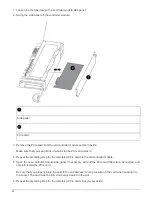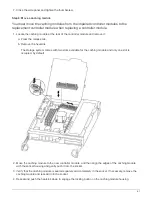
Step 1: Verify and set the HA state of the chassis
You must verify the HA state of the chassis, and, if necessary, update the state to match
your system configuration.
1. In Maintenance mode, from either controller module, display the HA state of the local controller module and
chassis:
ha-config show
The HA state should be the same for all components.
2. If the displayed system state for the chassis does not match your system configuration:
a. Set the HA state for the chassis:
ha-config modify chassis
HA-state
The value for HA-state can be one of the following:
*
ha
*
mcc
*
mcc-2n
*
mccip
*
non-ha
b. Confirm that the setting has changed:
ha-config show
3. If you have not already done so, recable the rest of your system.
4. The next step depends on your system configuration.
If your system is in…
Then…
A stand-alone configuration
a. Exit Maintenance mode:
halt
b. Go to
"Completing the replacement process
.
An HA pair with a second
controller module
Exit Maintenance mode:
halt
The LOADER prompt appears.
Step 2: Run system-level diagnostics
After installing a new chassis, you should run interconnect diagnostics.
Your system must be at the LOADER prompt to start System Level Diagnostics.
All commands in the diagnostic procedures are issued from the node where the component is being replaced.
1. If the node to be serviced is not at the LOADER prompt, perform the following steps:
a. Select the Maintenance mode option from the displayed menu.
b. After the node boots to Maintenance mode, halt the node:
halt
After you issue the command, you should wait until the system stops at the LOADER prompt.
During the boot process, you can safely respond
y
to prompts:
2. Repeat the previous step on the second node if you are in an HA configuration.
Both controllers must be in Maintenance mode to run the interconnect test.
3. At the LOADER prompt, access the special drivers specifically designed for system-level diagnostics to
46
















































